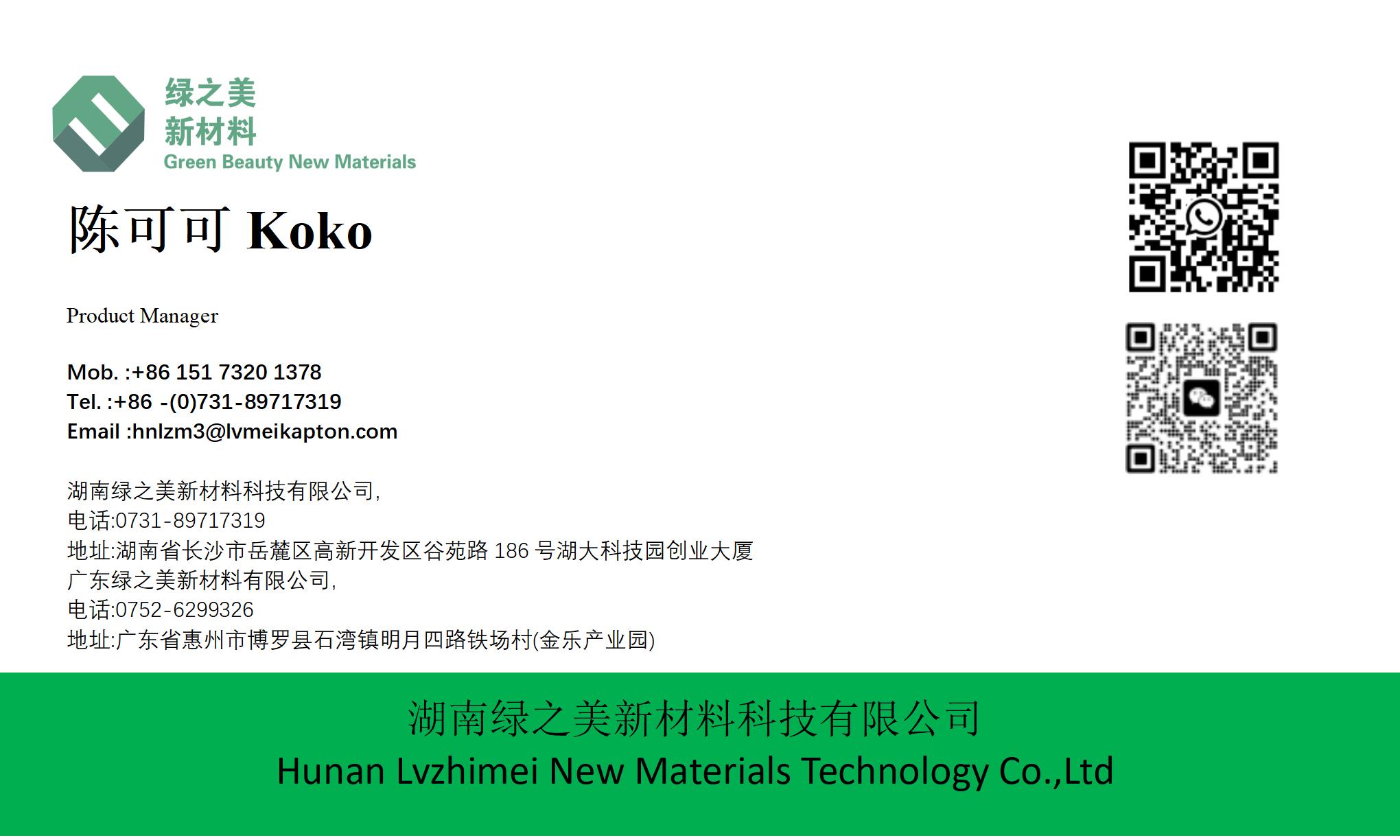hnlzm@lvmeikapton.com
+86 13787123465


Hunan Lvzhimei New Material Technology Co., Ltd.


NameDescriptionContent
How to Effectively Apply Brown Circuit Board High Temperature Tape for Long-Term Durability |
Source:
|
Author:Koko Chan
|
Published time: 2025-04-25
|
117 Views
|
Share:
In the electronics industry, protecting circuit boards from thermal stress and chemical exposure is crucial. Brown circuit board high temperature tape, often made from PI material (polyimide), offers exceptional durability and reliability. This tape not only withstands temperatures up to 300°C but also provides strong adhesion and blocking high-temperature protection. It’s widely used in applications like gold finger electronics, PCB soldering, and powder coating processes. Understanding its advantages can help you achieve long-term performance.
What Are the Key Features of High-Temperature Tape?Brown circuit board high temperature tape (e.g., PI material high temperature resistant 300 tape) combines several essential properties:
1.
High-Temperature Resistance: Remains stable from -70°C to 300°C (short-term up to 500°C), ideal for reflow soldering and wave soldering.
2.
Excellent Adhesion: Self-adhesive back blocking spray paint tape ensures secure bonding to various surfaces without residue after removal.
3.
Chemical Resistance: Resistant to acids, alkalis, solvents, and corrosive gases, protecting components from environmental hazards.
4.
Low Dielectric Constant: Maintains electrical insulation even under high voltages.
5.
Non-Stick Surface: Easy to remove without damaging delicate circuits, like gold fingers.
Table: Comparison of Common High-Temperature Tape Materials
Material | Temperature Range | Key Features | Typical Uses |
PI (Kapton) | -70°C to 300°C | Ultra-high temp., excellent dielectric strength | Gold finger protection, PCB masking |
PET | -50°C to 200°C | Cost-effective, good adhesion | SMT fixture, temporary bonding |
Teflon (PTFE) | -200°C to 260°C | Non-stick, chemical resistance | Cable insulation, high-friction surfaces |
Which Types of Brown Circuit Board Tape Should You Use?Selecting the right tape depends on your application’s requirements:
1.
PI Material High Temperature Tape: For extreme environments (e.g., reflow ovens), featuring lvmeikapton insulating electrical tape properties.
2.
Adhesive PET Material High Temperature Tape: Ideal for powder coating and spray painting protection with self-adhesive back blocking.
3.
Brown Circuit Board High Temperature Tape: Specifically designed for PCB solder masking, offering strong adhesion and blocking high temperature tape performance.
4.
Double-Sided High Temperature Tape: Useful for bonding heat-resistant components or thermal management.
When to Use Brown vs. Clear or Green Tape?
●
Brown: Visible during application, easier to inspect alignment.
●
Clear: Preferred for aesthetic applications (e.g., LED assemblies).
●
Green (PET): Lower cost, suitable for short-term high-temp tasks.
How to Prepare the Surface for ApplicationProper surface preparation is vital for long-term durability:
1.
Cleanse the Surface: Use isopropyl alcohol or dedicated electronics cleaner to remove dust, oils, or flux residues.
2.
Dry Thoroughly: Ensure no moisture remains to prevent adhesion issues.
3.
Check Surface平整度: Avoid uneven surfaces or sharp edges that could cause tape tearing.
4.
Mask Adjacent Components: Protect nearby sensitive areas (e.g., connectors) from tape overspray.
Step-by-Step Application ProcessStep 1: Measure and Cut Tape
●
Use a template or ruler to ensure precise dimensions.
●
Avoid stretching the tape during cutting.
Step 2: Peel Off the Release Liner
●
Start from one corner and slowly peel while maintaining tension to prevent curling.
Step 3: Position and Apply Tape
●
Align tape edges carefully, applying even pressure with a squeegee or roller to remove air bubbles.
●
For gold finger protection, ensure tape extends slightly beyond the soldering area.
Step 4: Post-Application Checks
●
Verify tape integrity under high magnification to detect wrinkles or gaps.
●
Perform a thermal cycle test (e.g., 260°C for 10 mins) to confirm stability.
Common Mistakes to Avoid
1.
Inadequate Surface Preparation: Dirty surfaces lead to poor adhesion and tape failure.
2.
Excessive Stretching: Stretching tape during application can cause contraction under heat.
3.
Insufficient Overlap: Ensure at least 2mm overlap for joints to prevent gaps.
4.
Using Wrong Tape Type: Substituting PI tape with lower-grade PET can result in thermal degradation.
5.
Improper Storage: Exposing tape to high humidity or direct sunlight can degrade adhesive properties.
Storage and Maintenance Tips
●
Store tape in a cool, dry environment (15-25°C, 40-60% RH).
●
Avoid folding or creasing tape rolls; use coreless reels if possible.
-定期检查胶带有效期,过期胶带可能导致粘着力下降。
●
For lvmeikapton insulating electrical tape, store away from strong electric fields.
Frequently Asked Questions (FAQs)Q1: Can I reuse high-temperature tape?A: Most tapes are designed for single-use, but some PI tapes can be reused if peeled slowly at room temperature.
Q2: How long can the tape withstand 260°C?A: Typically, tapes like PI material high temperature resistant 300 tape can endure continuous exposure at 260°C for thousands of hours.
Q3: What’s the difference between Kapton and PET tape?A: Kapton (PI) offers higher temp resistance and better electrical properties, while PET is more cost-effective for lower-temp applications.
ConclusionApplying brown circuit board high temperature tape correctly is essential for ensuring electronics reliability. By understanding tape properties, selecting the right type, and following best practices, you can achieve long-lasting protection against thermal stress, chemicals, and mechanical wear. Remember to prioritize surface preparation, precise application, and proper storage to maximize tape performance. For professional-grade solutions, consider trusted brands like lvmeikapton for premium PI material high temperature resistant 300 tape and self-adhesive back blocking spray paint tape products.
SEO-Optimized Meta InformationTitle: How to Effectively Apply Brown Circuit Board High Temperature Tape for Long-Term Durability |Description: Learn step-by-step techniques for applying PI material high temp tape (Kapton, PET) on circuit boards. Discover tips for durability, avoiding common mistakes, and selecting the right tape type.Keywords: brown circuit board tape, PI tape, Kapton tape, high temp tape application, gold finger protection, self-adhesive tape, lvmeikapton, strong adhesion, thermal protection



Hunan Lvzhimei New Material Technology Co., Ltd.
Quick Links
Product Categories
© 2024 Hunan Lvzhimei New Material Technology Co., Ltd.All Rights Reserved. Designed by Erge
0731 - 89717319
hnlzm@lvmeikapton.com
+86 13787123465
Room 502, Chuangye Building, No186, Guyuan Road, High-Tech District, Changsha, Hunan, China
CONTACT



